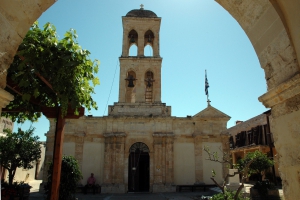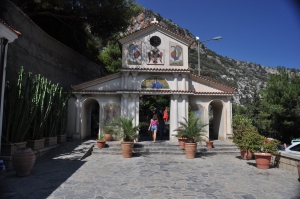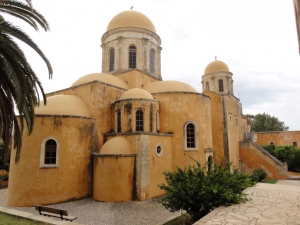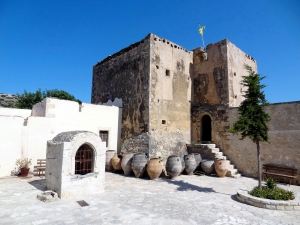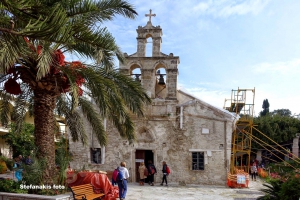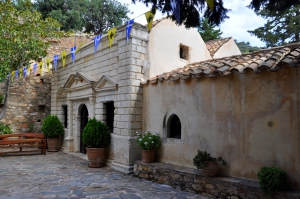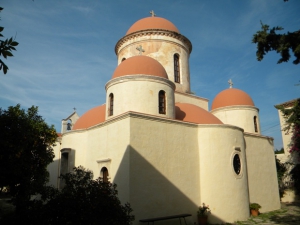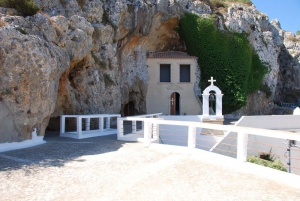The seaside Monastery of Panagia Odigitria is located at the base of the peninsula Spatha, about 26km west of Chania and 2.5km north of Kolimbari. The monastery is also known as Lady of the Angels Monastery of Gonia (Gonia = Corner) due to its location on the western edge-corner of the bay of Chania.
The male monastery of Saint George Selinaris is built in the heart of the gorge Selinari, near Vrachasi village and Neapolis. Next to the monastery passes the National Road connecting Heraklion to Agios Nikolaos, which is the main reason why Selinaris receives many visitors daily.
Gouverneto or Gderneto Monastery is located 19km east of Chania, on the north side of the Cape Akrotiri of Chania, near the monastery of Agia Triada Tzagarolon. It can be accessed through the Agia Triada, where there is a sign leading to the Gouverneto.
Odigitria Monastery is a male monastery located in a protected position of Asterousia Mountains, at an altitude of 250m. The monastery can be accessed through the village of Sivas in Messara Plain. It is one the most historic monasteries in Crete, known for its huge estate, with several chapels and vast land property in Asterousia Mountains.
The nunnery of Paliani is located at an altitude of 280m, next to the village Venerato, 20km southwest of Heraklion at the exit of Venerato Gorge. The monastery is dedicated to the Assumption and celebrates on August 15.
The Monastery Attali or Bai is built over the hill of Agia Ypakoi, west of Bali, with panoramic sea views to the sea and close to the main road connecting Rethymnon to Heraklion. The region was isolated till 1970, when the highway was constructed, and thus monasticism and asceticism flourished till then.
Chrysopigi monastery is located 3km south of Chania city. Its temple belongs to the architecture Mount Athos triconch with dome and is dedicated to the Panagia Zoodochos Pigi (Live Giving Virgin Mary) (celebr. on Friday after Easter). Thousands of believers arrive here to honor the miraculous icon of Virgin Mary.
The Monastery of Panagia Faneromeni (i.e. Revealed Holy Mary) or Virgin Mary of Gournia is located northwest of Pachia Ammos, 24km south of Agios Nikolaos. It is a male monastery built on a steep slope at an altitude of 540 meters with stunning sea views. The monastery church is built inside a cave.











